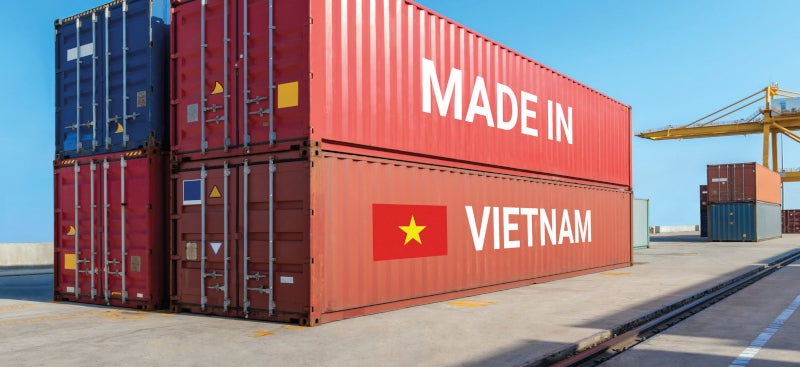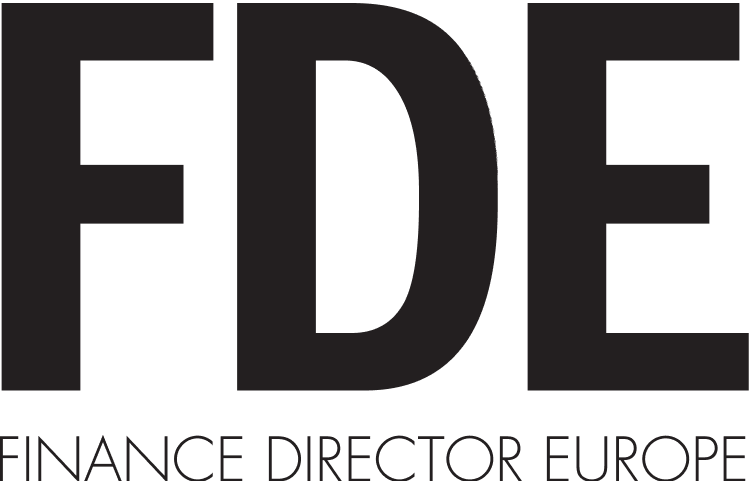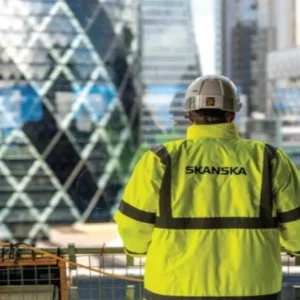
As the earth spun into 2020, a new virus was emerging in the Chinese city of Wuhan. Before the year was out, it would change every country on the planet. Not even multinational enterprises, usually so adept at hopping borders in search of the most favourable conditions, could escape its clutches. In fact, they seem to have been pulled in precisely the opposite direction.
In total, global foreign direct investment (FDI) flows tumbled 35% to $1trn from $1.5trn in 2019, according to the UN Conference on Trade and Development’s World Investment Report (UNCTAD WIR) 2021. Yet while foreign investments in developed economies fell by 58%, FDI in what the WIR classifies as developing Asia increased by 4%. For the first time ever, that region accounted for more than half of the planet’s FDI spend, up from just a third in 2019. Readers of the top-line figures would be excused for wondering what happened to their global crisis.
Worry not: Covid impacted everyone – it’s just that some countries were better prepared than others. As Mike Pfister, senior economic advisor at the OECD, points out, one of the key differences between developing Asia and the rest of the world is that the former group consists largely of states that experienced a comparable health crisis, Sars, less than 20 years ago. In other words, the region’s governments had applicable expertise in responding to a – more lethal, if less transmissible – coronavirus across what Pfister calls the three “fronts” of public safety, regulation and economic support.
By the same token, the fallout from the financial crash of 2007–08 gave central banks and economic regulators everywhere a harsh lesson in doing whatever it takes to keep the economy afloat. Regulatory processes made more responsive after the financial crisis facilitated the movement of essential goods and services across borders when supply chains were stretched by the pandemic, while enlarged public purses enabled governments to prop up locked-down economies for extended periods. “Had this crisis happened in 2005, it would have been a lot worse, simply because we hadn’t had that prior financial crisis to help us weather the regulatory shocks and deliver economic support packages better,” says Pfister.
Unfortunately, the public doesn’t necessarily see it that way. In Europe and the US, in particular, the financial crash and great recession convinced many that the hapless politicians in their midst cared more for financial institutions than people. By contrast, Pfister adds, East and South East Asian populations look back on the latter stages of the Sars response as an example of public-spirited government competence. Having lived through one coronavirus, they were more willing than their counterparts elsewhere to comply with similar instructions for suppressing another. As Pfister puts it: “In general, they trusted that their governments would basically do their best to find solutions and tackle the crisis through testing and tracing […] which worked extremely well in Asia.”
Indeed, according to the WIR breakdown, flows to developing East Asia increased by 21%, to $292bn. China, the original epicentre of both SARS and Covid, attracted $149bn of that total, a 6% increase on the previous year. In Hong Kong, which is counted separately, FDI inflows shot up 62% to $119.2bn from the anomalously low numbers recorded in 2019. Meanwhile, the figure for South Asia also rose by 20% to $71bn, driven almost entirely by a rise in flows involving India. In the subcontinent, investment jumped 27% to $64.1bn.
Keep your friends close
Clearly, the region’s resilience has been driven by the robust performance of its largest economies. But these do not map exactly onto the impacts of the pandemic. In the WIR’s terms, the positive figures for China reflect “to a degree” the country’s success in containing its initial Covid outbreak and preventing further surges, which enabled a rapid recovery after severe first quarter lockdowns. Though South East Asia, a driver of global FDI growth for the past decade, also performed well in suppressing Covid, its inflows contracted by 25% to $136bn.

In fact, excluding Hong Kong, which, as the WIR makes clear, traditionally accounts for sizable conduit flows, FDI in developing Asia actually fell by 6% ($26bn) in 2020. Elsewhere, the liquidation of several large holding companies, corporate reconfigurations and intra-firm financial flows in the Netherlands, which operates similarly in Europe, accounted for nearly one-third of the $500bn global FDI drop. “Excluding the effects of conduit flows, one-off transactions and intrafirm financial flows,” the WIR notes, “the global decline was slightly more moderate (about 25%) and uniform.”
But those 19 percentage points are still significant. A drop of 6% is still a more positive figure than the WIR records for any grouping except the least developed economies, where FDI “remained practically unchanged in 2020, largely due to developments in Angola”.
For Pfister, the poster child of this more modest Asian resilience story is Vietnam, where international investment remained stable through 2020, earning it a spot in the top 20 countries for incoming FDI.
“Investors often say that ‘capital is a coward’, and the same applies here,” he explains. “When the investment environment is shaky, when there’s low trust in the government, investment flows are going to suffer.” By contrast, “any well-run economy where there’s good trust in government and you’re seeing positive results from government actions has one of the critical preconditions for investment flows and quality investment.”
There, Vietnam’s success was twofold. As well as limiting Covid infections and deaths in 2020, the government took decisive actions to keep companies hit hard by lockdowns afloat. “And they weren’t just catering to the domestic market,” adds Pfister. “They also supported those that were involved in global and regional value chains. That really added to the trust in the government, which is an extremely important ingredient for recovery and growth going forward.”
That’s particularly true when it comes to longer-term greenfield investments and international project finance deals. Despite the greater FDI falls in other South East Asian countries, together they attracted over $68bn of greenfield investment projects – more than anywhere else. That indicates, in the WIR’s words, “MNEs strong investment commitment to the region”. International project finance deals for renewable energy in the area also rose to $33bn, with Vietnam accounting for more than 40% of all projects involving wind and solar plants.
Another important factor to note here is the predominance of intra-regional flows across East and South East Asia, which compounded the economic impacts of governments’ health measures. “They’ve always had high intra-regional investment, with Singaporeans investing in Thailand and Thais investing in Singapore, for example,” explains Pfister. “So, with these economies, FDI is cyclical; if these economies are doing okay, FDI is going to keep going.” Indeed, the WIR highlights more than $3bn of Thai investment in Vietnamese energy projects in 2020.
There’s a clear comparison there with the EU. But whereas Europe is still dealing with the impacts of Brexit, many Asian countries are strengthening their trading partnerships. “The UK was always a big player, so that’s taken a crack at the EU figures,” says Pfister. “But European countries also suffered massively from the Covid crisis. FDI reflects economic activity, and hence their FDI flows fell.”
Cold capital
Concerned about Chinese competition and involvement in their economies, European countries, like almost all the planet’s most developed nations, have also spent recent years tightening their regulation of FDI. By ramping up protectionism while productivity stagnated, however, Pfister fears they exposed a vulnerability that worsened their experience of the crisis.
“If you look at the two years before Covid, from 2017 to 2019, we saw that the majority of the largest economies had already put in place national security measures to fend off any potential risk associated with foreign takeovers,” he explains.
“We were reaching a point where we were saying, ‘Okay, something has to happen’. When you already have slowing market forces, a difficult environment for FDI and protectionist policies on the rise, and then you have a crisis – of course that’s going to contribute to a massive drop, but it basically sharpened those pre-existing challenges.”
By contrast, Vietnam was one of the largest FDI recipients to introduce new investment promotion measures and incentives in 2020, expanding the list of business lines eligible for investment incentives and allowing certain disputes between the state and foreign investors to be taken to international arbitration. In line with the regional trend, it also continued to liberalise its foreign investment framework – hoping, perhaps, to capitalise on democratic governments’ attempts to convince companies to divest from China.
Of course, as we have seen, that hasn’t exactly gone to plan – China was the largest economy to liberalise its investment framework in 2020, and its FDI inflows grew more than any other East or South East Asian nation. According to the country’s ministry of commerce, FDI has kept rising this year, too, totalling 33.9% more in the first half of 2021 than it did in the same period in 2020. “One thing we have not seen yet, which was expected by many experts and analysts, is any significant ‘reshoring’ phenomenon,” says Pfister. “That hasn’t happened, and it proves the point that investment goes where there’s a market.”
From this perspective, capital is a little less cowardly. At the very least, it trusts itself to optimise value. “Companies don’t follow Cold War geopolitics; companies follow markets,” Pfister stresses. “A lot of the reshoring discourse was a political discourse; less so an economic one. It fits in the narrative of increasing restrictive policies, nationalistic policies, protectionist policies. But those were political narratives, whereas companies were always looking at optimising their value chains, knowing very well where they can produce better and where the end market is larger.”
Vaccine economics
The WIR forecasts continued growth in FDI across developing Asia in the near-to-medium term, but it’s likely that global FDI flows will begin to rebalance over the next two years. Crises tend to align political and economic concerns. When the WIR was published in May, an astounding 90% of recovery spending was confined to developed countries. Those trillions of public dollars will exert a gravitational pull on MNEs, as can already be seen in the relative resilience of international project finance deals in developed countries – which actually rose in number during 2020 – and the record-breaking $48bn invested in greenfield information and communication technology projects in developed economies. That includes a $12bn investment by the Taiwanese company TSMC in US chip factories. Similarly, thanks to their speedy vaccine rollouts, developed countries can now restart their economies and open their borders with a degree of confidence that nations reliant on testing, tracing and lockdowns can’t match.
Perhaps more important, however, is the impact of the pandemic on global productivity – as evidenced by the sudden burst of innovation and investment in the biomedical and ICT sectors. “Some sort of creative destruction will result from this,” says Pfister. “Productivity was stagnant for years, and we’re likely to see an increase that’s due on the one hand to improved processes and the increased use of digital tools, but also to labour shortages. Companies will not be able to hire like they would want, so they will have to innovate. We as economists will be quite excited to see what that brings in terms of job creation, better jobs, and helping pull people out of poverty.” It’s not only Asian countries that should be better prepared next time.
35%
The percentage fall in global FDI flows in 2020.
53.6%
The percentage share of global FDI that flowed into developing Asia in 2020, up from 33.7% in 2019.
World Investment Report 2021
90%
The percentage proportion of recovery spending planned in developed countries.
World Investment Report 2021
33.9%
The percentage rise of FDI in China, in the first half of 2021 over the same period in 2020.
RT






